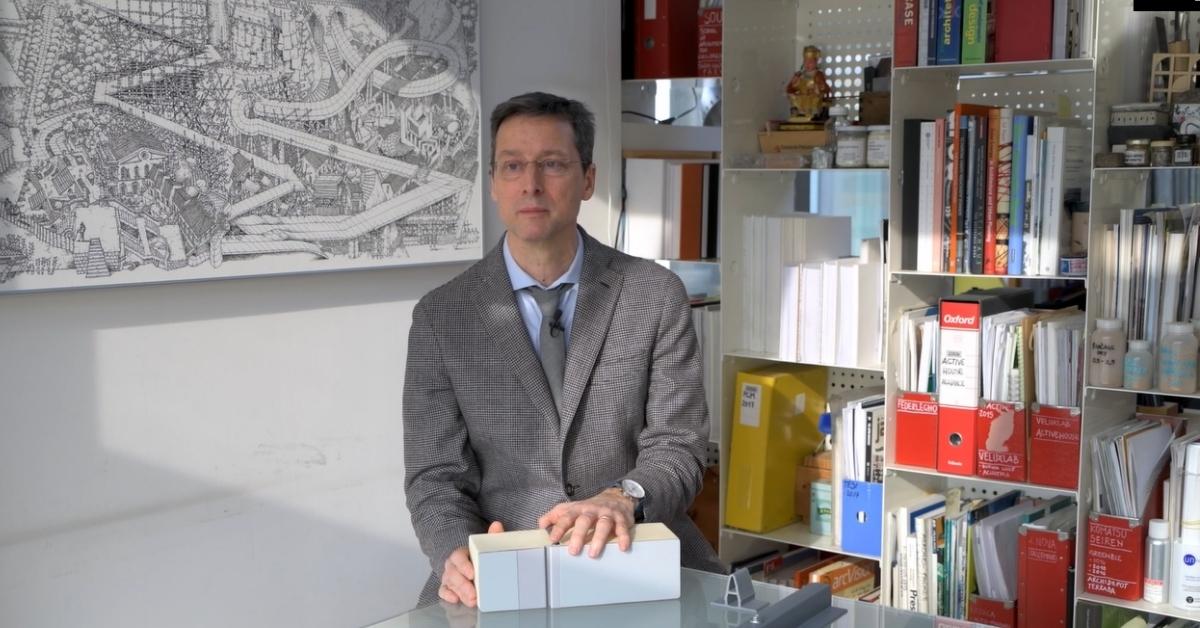In this article today we report the key points of the interview with Marco Imperadori on the VELUXlab case, much more than a simple, low energy impact building experiment.
VELUXlab is an advanced research centre, built in 2006. At that time it was called ATIKA and, later, it was assembled by VELUX, first in Bilbao, then in Rome and then in Milan, at the fair for one year.
In 2011 it became VELUXlab, when it was decided to reassemble it at the Polytechnic University of Milan and make it the first Nearly Zero Energy Building on a university campus. It was equipped with a series of innovations to the building’s system, then turned into a living experiment.
For the first year it was not lived in, since 2012 it has been occupied with a group of researchers, graduate students and professors continuously at work, who study the light, the ventilation system and generally the behaviour of high energy efficient buildings.
See the full interview:
Which Isopan technologies have been used?
Starting from the assumption that VELUXlab was conceived to be a continuously changing experiment, 9 years after it was built it was decided to completely redo the roof stratigraphy and make it "living", thanks to GreenROOF co-engineered by ISOPAN-DAKU.
How?
By designing a "green" roof that features a mix of high energy efficiency, water tightness and ventilation. A panel similar to the one initially placed on the roof was used: above the ventilation layer there is an ISOPAN polyurethane sandwich panel (steel sheet, polyurethane layer and steel sheet) coupled with a PVC sheath by Renolit, one of our partners, which comprises Isodeck PVSteel.
A complete, new kit has been devised, which allows the building to have on the one side an active and productive layer, which is the photovoltaic one and which provides the necessary energy - especially in summer - for internal air conditioning, and on the other a green layer, in this case the partner is DAKU, with non irrigated living sedum and, therefore self-sufficient in terms of water support to the plant layer.
In practice, therefore, this layer is living? It reduces radiation on the roof - the real facade of the building - preventing radiation from getting into the interior spaces, and it captures particulate.
What challenges have been won thanks to Isopan technologies?
The technology that we gained in terms of this application is definitely:
- Quick installation;
- Compatibility, given the fact that it was an intervention of recovery;
- Speed, safety on the construction site;
- Measurable performance.
The building is equipped with a multitude of sensors, with the aim of monitoring the real effect of the changes made to the building.
VELUXlab is proof of a form of innovation in construction, which bonds very well with the idea of energy efficiency, but also with the beauty of a simple design that is appreciated by everyone who comes to the building.
And visitors are numerous, as VELUXlab is a very popular Active House.
The design of the building was created to be optimised in relation to external climatic forces. The Skyline takes energy from the east and stores it, while the pinnacle to the west actually serves to shield the building in the summer.
The building is oriented exactly towards natural forces and it does so in an extremely technological way, yet in a completely transparent way, without therefore drawing attention to the particular innovative details.
A true innovative gem.


